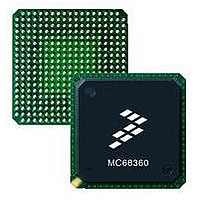MC68360CAI25L Freescale Semiconductor, MC68360CAI25L Datasheet - Page 734

MC68360CAI25L
Manufacturer Part Number
MC68360CAI25L
Description
IC MPU QUICC 25MHZ 240-FQFP
Manufacturer
Freescale Semiconductor
Datasheets
1.MC68EN360VR25L.pdf
(14 pages)
2.MC68EN360VR25L.pdf
(2 pages)
3.MC68360AI25L.pdf
(962 pages)
4.MC68360CAI25L.pdf
(24 pages)
Specifications of MC68360CAI25L
Processor Type
M683xx 32-Bit
Speed
25MHz
Voltage
5V
Mounting Type
Surface Mount
Package / Case
240-FQFP
Family Name
M68000
Device Core
ColdFire
Device Core Size
32b
Frequency (max)
25MHz
Instruction Set Architecture
RISC
Supply Voltage 1 (typ)
5V
Operating Supply Voltage (max)
5.25V
Operating Supply Voltage (min)
4.75V
Operating Temp Range
-40C to 85C
Operating Temperature Classification
Industrial
Mounting
Surface Mount
Pin Count
240
Package Type
FQFP
Controller Family/series
68K
Core Size
32 Bit
Cpu Speed
25MHz
No. Of Timers
4
Embedded Interface Type
SCP, TDM
Digital Ic Case Style
FQFP
Supply Voltage Range
3V To 3.6V, 4.75V To 5.25V
Rohs Compliant
Yes
Lead Free Status / RoHS Status
Lead free / RoHS Compliant
Features
-
Lead Free Status / Rohs Status
Compliant
Available stocks
Company
Part Number
Manufacturer
Quantity
Price
Company:
Part Number:
MC68360CAI25L
Manufacturer:
SAMTEC
Quantity:
1 000
Company:
Part Number:
MC68360CAI25L
Manufacturer:
FREESCAL
Quantity:
717
Company:
Part Number:
MC68360CAI25L
Manufacturer:
Freescale Semiconductor
Quantity:
10 000
Part Number:
MC68360CAI25L
Manufacturer:
FREESCALE
Quantity:
20 000
- MC68EN360VR25L PDF datasheet
- MC68EN360VR25L PDF datasheet #2
- MC68360AI25L PDF datasheet #3
- MC68360CAI25L PDF datasheet #4
- Current page: 734 of 962
- Download datasheet (4Mb)
Freescale Semiconductor, Inc.
Applications
follow. (In embedded control applications, most users leave the CPU in supervisor mode
permanently.)
Step 3: Write the VBR
Many users initialize the ROM to contain an initial exception vector table. If so, the user
should write the CPU vector base register (VBR) to point to the starting location of the table.
(The exception vector table defines where to find the routines that handle interrupts, bus
errors, traps, etc.) Note, however, that exceptions will not be ready to be handled properly
until the stack pointer points to addressable RAM.
Step 4: Write the MBAR
The module base address register (MBAR), which always exists at a fixed address, deter-
mines where the 8-Kbyte block of QUICC internal RAM and internal peripherals are to be
mapped. To put the 8-Kbyte block at $700000, write $00700001 to the MBAR. The MBAR
must be accessed before any other QUICC internal peripheral or RAM location. Remember
that the MBAR must be written in a special way as described in the Section 6 System Inte-
gration Module (SIM60). (If multiple QUICCs exist in the system, it may be necessary to
write the MBARE before writing MBAR.)
Step 5: Verify a Dual-Port RAM Location
First, verify that the MBAR address was programmed correctly. This can be done by testing
one of the dual-port RAM locations. Write $33 and $CC to location $700000 and verify that
these values can be correctly read. Location $700000 is the beginning of the QUICC internal
RAM.
Step 6: Is This a Power-Up Reset?
Next, determine the cause of the reset from the reset status register (RSR). The RSR is nor-
mally cleared by the user after it is read (ones are written to RSR). If this is not a power-up
reset, the user may wish to take actions other than the ones listed or notify the system of the
cause of an unexpected reset to aid in debugging. Many of the following steps are only nec-
essary after a power-on reset. See Section 4 Bus Operation for more details on the effects
of the different types of resets.
Step 7: Deal with the Clock Synthesizer
The next step is to set up the clock synthesizer, which is located in the SIM60. The three
registers that control the clock synthesizer are the CLKOCR, the PLLCR, and the CDVCR.
If a low-speed external crystal is used (such as 32 kHz or 4 MHz), multiply the QUICC clock
frequency up to the desired speed (e.g., 25 MHz). If an external oscillator is used to provide
the exact system frequency, then this step is not needed.
The clock synthesizer has other options, such as SyncCLK and BRGCLK dividers, as well
as the ability to divide the general system clock frequency. These are used in low-power
applications. At this time, leave all these options in their default conditions. These options
should only be enabled when the rest of the application code is in a more stable state.
9-14
MC68360 USER’S MANUAL
For More Information On This Product,
Go to: www.freescale.com
Related parts for MC68360CAI25L
Image
Part Number
Description
Manufacturer
Datasheet
Request
R
Part Number:
Description:
Manufacturer:
Freescale Semiconductor, Inc
Datasheet:

Part Number:
Description:
MC68360 MC68360 Multiple Ethernet Channels on the QUICC
Manufacturer:
Motorola / Freescale Semiconductor

Part Number:
Description:
MC68360 Implementing an 8 bit Eprom for an MC68EC040-MC68360 System
Manufacturer:
Motorola / Freescale Semiconductor

Part Number:
Description:
MC68360 Interfacing the MC68060 to the MC68360
Manufacturer:
Motorola / Freescale Semiconductor

Part Number:
Description:
MC68360 MC68360 RAM Microcode Package Option Overview
Manufacturer:
Motorola / Freescale Semiconductor

Part Number:
Description:
MC68360 MC68360 CPM-CPU Interaction
Manufacturer:
Motorola / Freescale Semiconductor

Part Number:
Description:
MC68360 Interfacing SDRAM to the MC68360 QUICC Device
Manufacturer:
Motorola / Freescale Semiconductor

Part Number:
Description:
MC68360 Interfacing the QUICC to a MCM516400 (4Mx4 10-12 column-row) DRAM
Manufacturer:
Motorola / Freescale Semiconductor

Part Number:
Description:
MC68360 Interfacing the 68360 (QUICC) to T1-E1 Systems
Manufacturer:
Motorola / Freescale Semiconductor

Part Number:
Description:
MC68360 Multiple QUICC Design Concept
Manufacturer:
Motorola / Freescale Semiconductor
Part Number:
Description:
Manufacturer:
Freescale Semiconductor, Inc
Datasheet:
Part Number:
Description:
Manufacturer:
Freescale Semiconductor, Inc
Datasheet:
Part Number:
Description:
Manufacturer:
Freescale Semiconductor, Inc
Datasheet:
Part Number:
Description:
Manufacturer:
Freescale Semiconductor, Inc
Datasheet:
Part Number:
Description:
Manufacturer:
Freescale Semiconductor, Inc
Datasheet:











